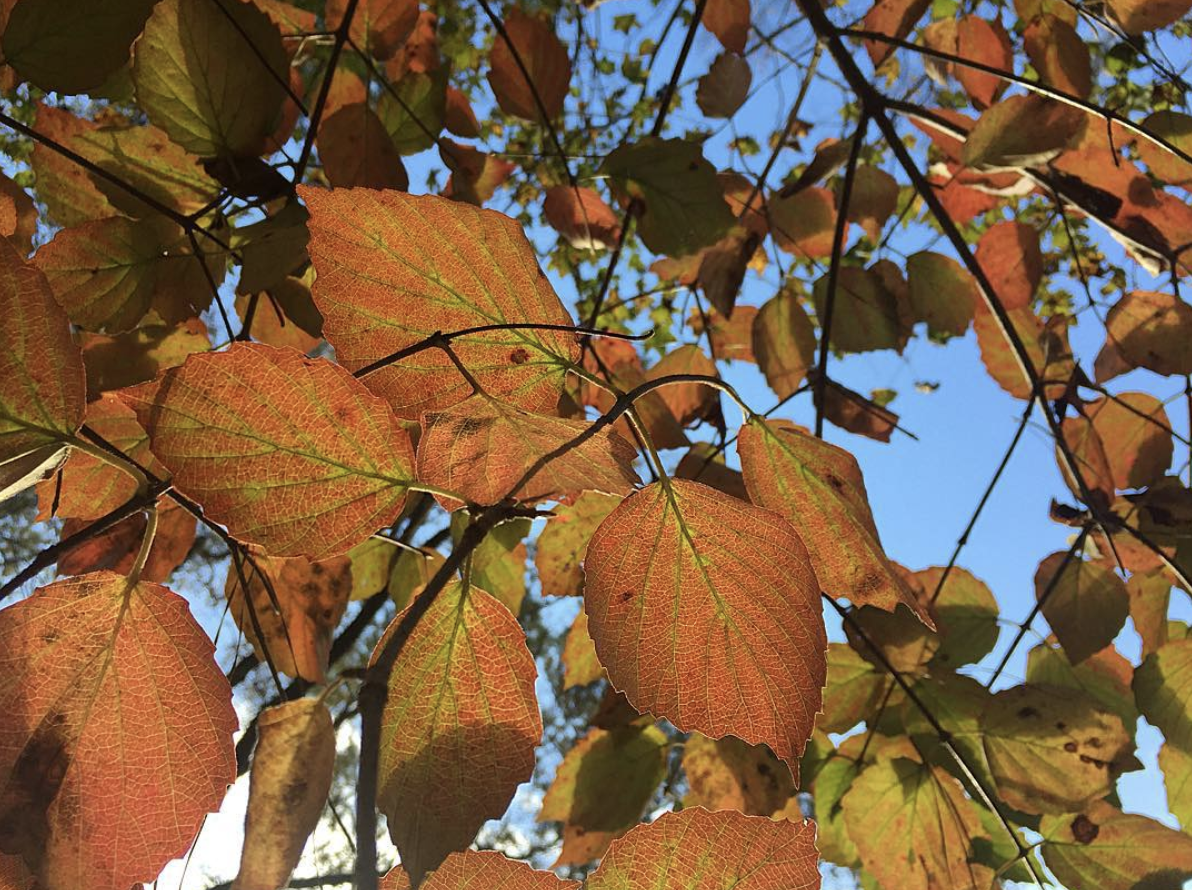East of the Apalachicola river, running to Alachua County, a landform known as the Cody Scarp delineates soils in Tallahassee. To the north of the Scarp is the Red Hills Region and to the south is the Woodville Karst Plain. As a resident of Wakulla County for many years, and currently residing in southern Leon County, I know gardening and landscaping in the sandy soil south of this line is much different than in the heavier loamy clay soils to the north.
You will see many beautiful native plants, such as American holly, on the sandy trails in Wakulla Springs State Park. Photo by John Ruter, University of Georgia, Bugwood.org.
So many plants native to this area thrive and perform extremely well in sandy soil. The abundance of birds and wildlife around my immediate neighborhood is a testament to the power of native plants. The thin sandy soil in the Woodville area where I live sustains a wide variety of natives. If you want to get a good idea of what will grow in these soils, take a walk at Wakulla Springs State Park on the Sally Ward Spring Run, which starts on the main road up from the Lodge at Wakulla Springs. The shady trail wanders through a beech-magnolia forest unique to our area. Besides the over-story of beech, magnolia, hickory, sweetgum, pines, and oaks you will find an understory of red buckeye, sparkleberry, yaupon holly, American holly, sugarberry, many species of hawthorne, saw palmetto, native azaleas, and beautyberry.
Indian pink (Spigelia marilandica) is a hardy native perennial that grows in the understory of various deciduous hardwood forests in Florida. Photo by David Stephens, Bugwood.org.
On my own property, I’ve found many of these same natives that require no maintenance to thrive. Wildflowers that flourish on their own include ironweed, goldenrod, blue curls, rosin weed, ruellia, elephant’s foot, ageratum, horsemint, partridge pea, butterfly weed, and coralbean. I’ve encouraged the indigenous deep green partridgeberry, which is the dominant groundcover in the forest. A woodcock shows up every year about the time the berries appear on this plant, and I wonder if it could be a food source for this prehistoric looking ground nesting bird. Alongside these plants, I have added many other native species that have basically managed with not a lot of attention, watering only when absolutely necessary. These include Indian pink, scarlet sage, purple coneflower, salt and pepper, and white wild indigo. Most are attractive to ruby-throated hummingbirds and many species of butterflies.
Ashe magnolia (Magnolia macrophylla var. ashei) is native to Florida, but it is endangered and can only be found in a few counties in the Panhandle. Photo by John Ruter, University of Georgia, Bugwood.org.
A few other natives surprised me by doing well in this sandy soil. Not usually found here, but native to Florida, firebush, Ocala anise, and Ashe magnolia have thrived on my land. I skeptically planted the deciduous Ashe magnolia and also a needle palm, both found over in Torreya State Park, and both have done remarkably well. The magnolia is now five years old, over 12 feet tall, and has bloomed every year since it was first planted. The Ocala anise fits the criteria for an evergreen screen between my house and the neighbor’s perfectly. In a severe drought I do put the soaker hose on it occasionally.
Additionally, I’ve added a fast-growing sycamore (the rapid growth on this is phenomenal) for shade to replace an unhealthy laurel oak that needed to come down and a pine that was hit by lightning and was too close to the house to leave. Other pines have been lightning struck and I left them standing. The snags are the perfect resting place for swallowtail kites in summer and the pileated woodpeckers constantly work them for bugs. My favorite tree is our state tree, the cabbage palm. I planted many over the years as memorials to loved ones. Some are now 10 feet by 10 feet, starting from one-gallon pots nine years ago.
As with all landscaping ventures, the right plant for the right place is crucial to success, as is watering the first six months to a year. You can’t put an Ashe magnolia in full sun and expect it to survive. You also can’t plant trees and then go on vacation expecting to come back to healthy plants. Protect your efforts and hire someone to water while you are gone. Help our native bees, butterflies, insects, birds, reptiles, and mammals by planting what they need to survive and thrive.











